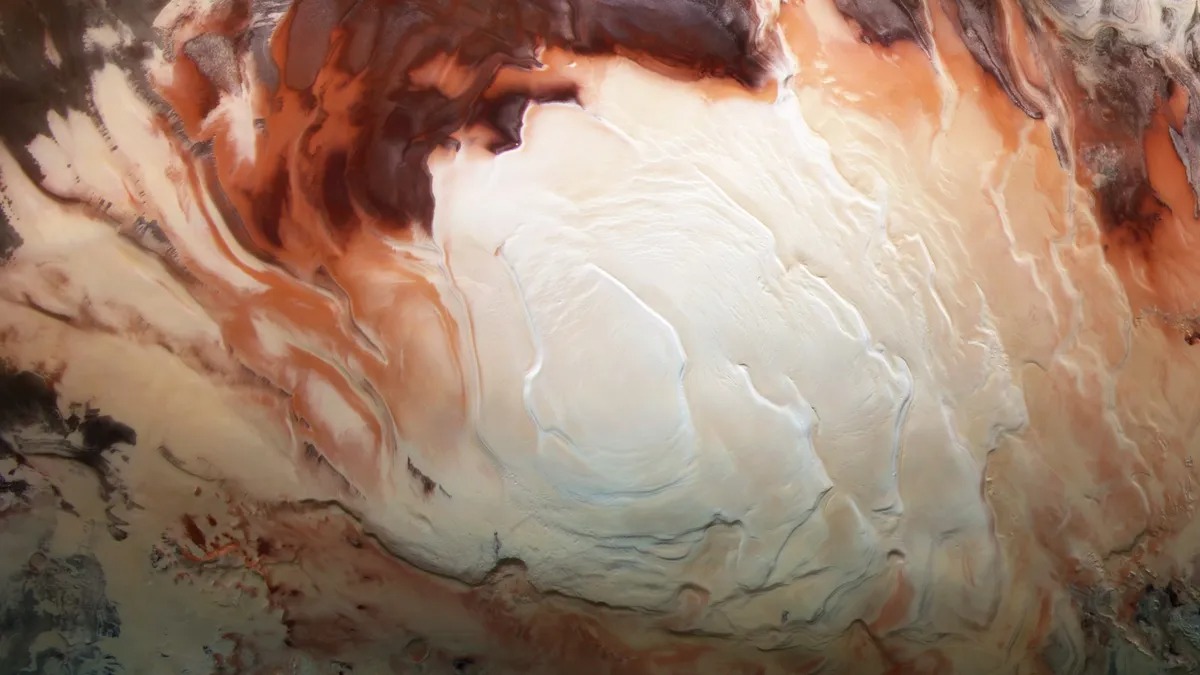The discovery of liquid water reserves on Mars would raise hopes of revealing signs of extraterrestrial life on the inhospitable Red Planet. That is why scientists are conducting a scientific dialogue about whether a reservoir of salt water is hiding under the ice cap of the south pole of Mars. A couple of new studies confirm one side of the debate supporting the hypothesis of its existence.

Two studies on this topic have been published in Nature Communications and the Journal of Geophysical Research Planets. In combination, they create a serious argument that the area under the ice cap is warm enough for the existence of underground lakes.
Water or ice?
The debate about liquid water under the ice cap began with the results of the research of the European Space Agency (ESA) Mars Express spacecraft. The probe noticed mysterious highlights coming out from under the cap. In 2018, a team of researchers stated that the data indicate that a huge lake with salt water may be hiding at a depth of 1.5 kilometers under the icy surface. A 2019 study showed that brackish lakes in the northern region are even more common than originally thought.
But not everyone agreed with the direct interpretation. In 2021, NASA questioned this conclusion. Space agency researchers doubted that the subsurface was really warm enough to support liquid water, even if the potential lake was extremely salty. Since then, scientific groups have proposed alternative explanations for these radar reflections of Mars Express, ranging from volcanic rock to frozen clay.
Argument in favor of lakes
The new study used a combination of computer models and laboratory experiments to sort out the situation. The work showed that the temperature under the polar cap can reach -73°C within the range for salt water. Previous studies believed that the temperature there is below -93 °C. According to geologist Graziella Caprarelli, “the physical properties of brines at these revised temperatures fully correspond to the power of radar signals received from the base of the southern Martian polar deposits”.
The Journal of Geophysical Research Planets study also suggests that the unique geological and geographical conditions at the South Pole may contribute to the existence of liquid water. And insulation from layers of carbon dioxide ice can help maintain high temperatures in the depths of Mars.
Earlier we reported that the Chinese rover Zhurong refuted the theory of water on Mars.
Follow us on Twitter to get the most interesting space news in time
https://twitter.com/ust_magazine

